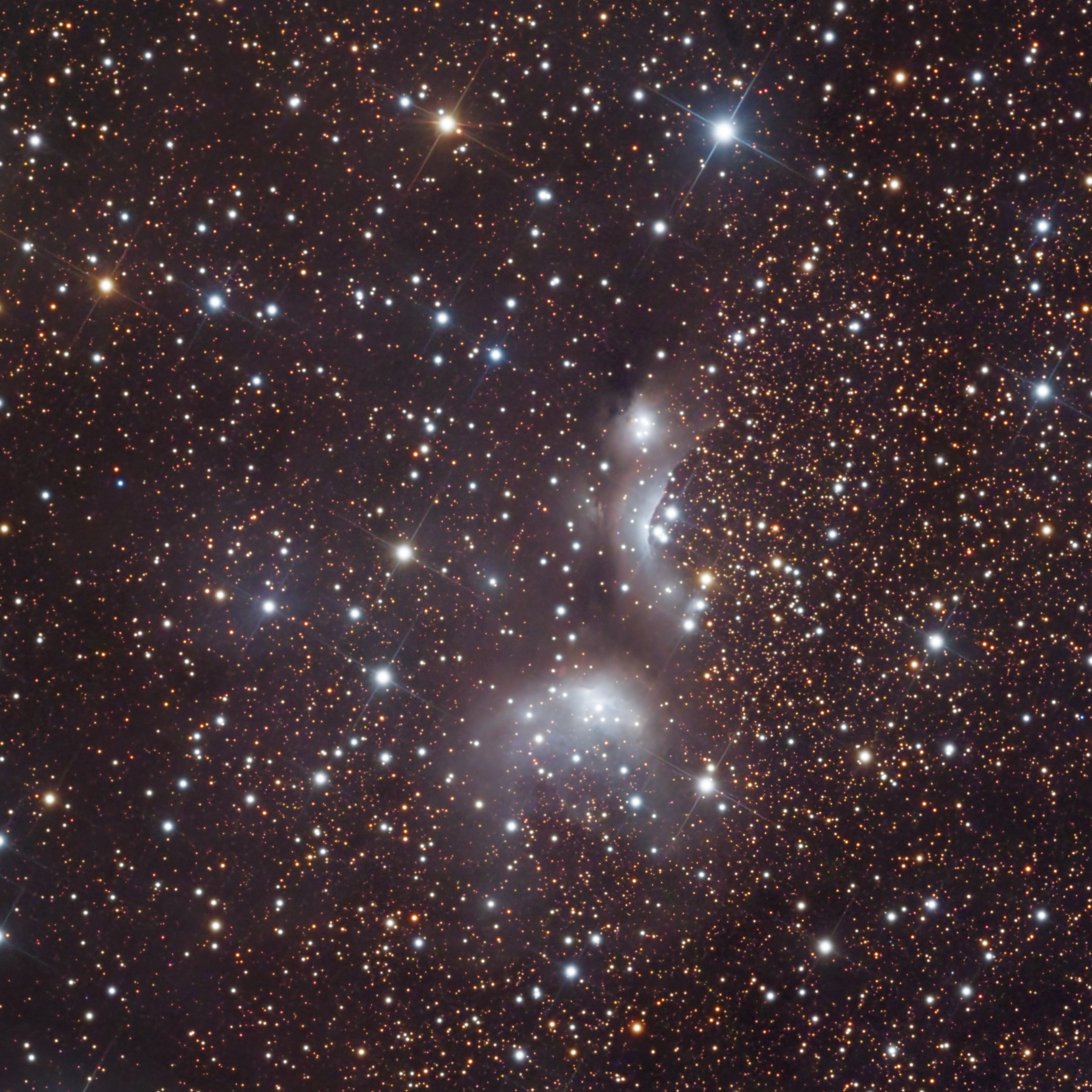

IC 4954 and IC 4955 are the nebulae (gas/dust clouds, so appear fuzzier than stars) near the center of the image (this photo is severely cropped from the original, and shown at full
resolution; you can click the links above the image to see four diffrent sizes of the uncropped field); IC 4954 is the nebula higher in this photo,
appearing to be vertical, while IC 4955 is just below and to the left of IC 4954, appearing to be horizontal. This field is located in the constellation Vulpecula, around 6500 light
years from us (so the full field of this photo--in the uncropped versions--is about 65 light years across at that distance) Each nebula is about 7 light years long (to put that in perspective,
a light year is about 63,000 times the distance from our sun to the earth).
Research has shown a continuing cycle of star formation here over three stellar generations. Astronomers believe that these types of high density molecular clouds often become star-forming
regions after supernova explosions when intense radiation from young high-mass stars sweeps the interstellar material together into these (relatively) high-density regions. The arc-like
structures of IC 4954 and IC 4955 each is formed by a young-massive star (not seen in the image) at the centre of the nebulae, sweeping material outward by its strong radiation pressure.
The shock-wave is particularly evident in the sharp right edge of IC 4954. Where the dust has been blown away, we can see a denser swarm of background stars (again particularly evident to the right of
IC 4954 in this image). The star cluster this star-forming has created is known as Roslund 4, which should not be confused with the entire dense star field of this image--the image is in the
midst of the Milky Way as seen from earth, so any photo of it from earth will include a myriad of stars not associated with the object. This also explains the reddish hue of so much of the field (especially
the fainter stars), since the intervening dust scatters the blue light more than the red light.
I love dense star fields, and showing objects in the greater context of the region, so (in addition to this cropped image), I have presented four sizes of the uncropped version.
Copyright 2019 Mark de Regt